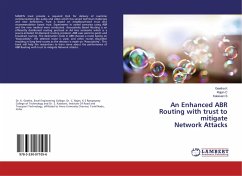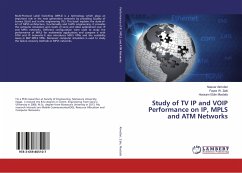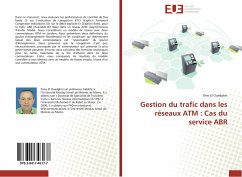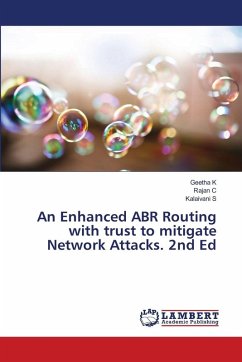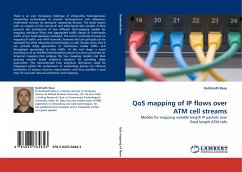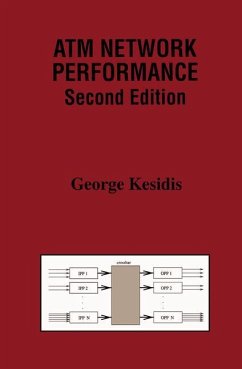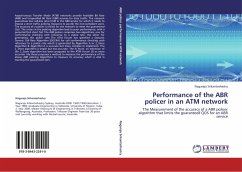
Performance of the ABR policer in an ATM network
The Measurement of the accuracy of a ABR policer algorithm that limits the guaranteed QOS for an ABR service
Versandkostenfrei!
Versandfertig in 6-10 Tagen
52,99 €
inkl. MwSt.

PAYBACK Punkte
26 °P sammeln!
Asynchronous Transfer Mode (ATM) networks provideAvailable Bit Rate (ABR) and Unspecified Bit Rate(UBR) services for data traffic. The networkguarantees low cell-loss ratio (CLR) in the ABRservice for which it needs to impose a strict trafficpolicing measures to punish the non-compliant users. The accuracy of a policer is critical for thenetwork to meet the guaranteed QoS. The errors inthe policing algorithm lead to poor performance, witha potential QoS short fall. The ABR policer comprisestwo algorithms, one for conformance checking withreference to a police rate, the other for generatingthe ...
Asynchronous Transfer Mode (ATM) networks provideAvailable Bit Rate (ABR) and Unspecified Bit Rate(UBR) services for data traffic. The networkguarantees low cell-loss ratio (CLR) in the ABRservice for which it needs to impose a strict trafficpolicing measures to punish the non-compliant users. The accuracy of a policer is critical for thenetwork to meet the guaranteed QoS. The errors inthe policing algorithm lead to poor performance, witha potential QoS short fall. The ABR policer comprisestwo algorithms, one for conformance checking withreference to a police rate, the other for generatingthe police rate. The ATM Forum has specified aDynamic Generic Cell Rate Algorithm (DGCRA) for cellconformance checking with reference to a police ratewhich is generated by Algorithm A or 2_StoreAlgorithm B. Algorithm A is accurate but morecomplex to implement. The 2_Store algorithm is simplebut less accurate. The N_Store, an extension of the2_Store algorithm has been proposed to the ATM Forum[3]as more accurate. My thesis proposes a method tomeasure the performance of the above ABR policingAlgorithms to measure its accuracy which is vital inmeeting the guaranteed QoS.



